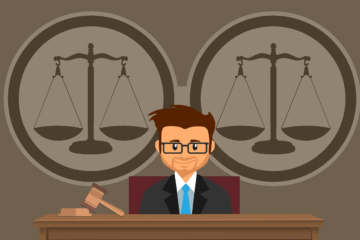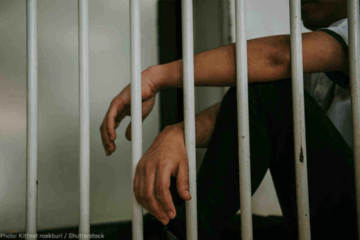
This article is written by Anjali Sanyal of Critical Analysis of Juvenile Justice Case, an Intern under Legal Vidhiya
ABSTRACT
This critical analysis examines a specific juvenile justice case with the aim of providing an in-depth evaluation of the legal proceedings, the effectiveness of the juvenile justice system, and the implications for the juvenile offender. The case under review involves a juvenile offender who was charged with a serious crime and underwent legal proceedings within the juvenile justice system. Through an analysis of the case, this study sheds light on the strengths and weaknesses of the system, explores potential alternatives, and assesses the long-term implications for the juvenile offender’s rehabilitation and reintegration into society.
KEYWORDS: IMPLICATION, OFFENDER, REHABILITATION, SYSTEM, REINTEGRATION.
INTRODUCTION
Juvenile justice refers to the system of laws, policies, and practices designed to address the legal rights, treatment, and rehabilitation of individuals who are involved in criminal behavior as minors. It focuses specifically on young people who have committed offenses, generally below the age of 18, and aims to provide them with appropriate interventions that promote their well-being, development, and reintegration into society. The principles underlying juvenile justice systems differ from those applied to adult offenders due to the recognition that children and adolescents possess unique characteristics and vulnerabilities. The primary goal of juvenile justice is rehabilitation rather than punishment, recognizing that young offenders have the potential for growth, change, and successful reintegration into society. It Is important to note that the specific laws and practices related to juvenile justice can vary significantly between jurisdictions, as each country or state has its own legal framework and approach to dealing with juvenile offenders. These systems are continuously shaped by research, evolving societal attitudes, and efforts to balance the need for public safety with the best interests of young individuals involved in the justice system.
WHAT IS JUVENILE CASE?
A juvenile case refers to a legal case involving a person who is considered a minor or a juvenile. Juvenile cases are distinct from adult criminal cases because they involve individuals who are under the age of majority, which varies by jurisdiction but is typically 18 years old.
The purpose of juvenile justice systems is to provide a separate and specialized approach to dealing with young offenders, focusing on rehabilitation rather than punishment. Juvenile cases often involve offenses committed by minors, such as juvenile delinquency, status offenses (actions that are only considered offenses because of the individual’s age, such as truancy or curfew violations), or cases involving abuse or neglect.
Juvenile cases are typically handled in special juvenile courts, which have jurisdiction over matters concerning minors. These courts often emphasize intervention, counseling, and educational programs rather than incarceration. The goal is to address the underlying issues that may have contributed to the juvenile’s involvement in illegal activities and to steer them towards a more positive path. The specifics of juvenile cases can vary depending on the jurisdiction and the nature of the offense. In some cases, serious offenses committed by minors may result in the transfer of the case to the adult criminal court system, where the juvenile will be tried as an adult.
DEFINITION OF JUVENILE
According to the Indian Penal Code (IPC), the term “juvenile” refers to a person who has not attained the age of 18 years. This definition is provided under Section 2(l) of the Juvenile Justice (Care and Protection of Children) Act, 2015, which is the primary legislation governing the rights and protection of juveniles in India.
The Juvenile Justice (Care and Protection of Children) Act, 2015, was enacted to ensure the care, protection, and rehabilitation of children in conflict with the law and children in need of care and protection. It recognizes the special needs and vulnerabilities of juveniles and aims to provide them with a supportive and rehabilitative environment.
CAUSE OF JUVENILE CASE IN INDIA
There are some common factors that can contribute to juvenile delinquency in India:
- SOCIOECONOMIC FACTORS: Poverty, unemployment, and lack of access to quality education and healthcare can increase the likelihood of juveniles engaging in criminal activities. These factors may lead to frustration, desperation, and a lack of opportunities, pushing young individuals towards delinquency.
- FAMILY BACKGROUND: Dysfunctional family environments, broken families, parental neglect or abuse, and inadequate supervision can contribute to juvenile delinquency. Children growing up in such circumstances may lack proper guidance, support, and positive role models, increasing their vulnerability to criminal behavior.
- PEER INFLUENCE: Peer pressure can have a significant impact on the behavior of juveniles. In some cases, individuals may join gangs or engage in delinquent activities to gain acceptance or belong to a certain group. Negative peer influence can lead to substance abuse, violence, and other criminal behaviors.
- LACK OF EDUCATION: Limited access to quality education or dropping out of school can significantly affect a child’s future prospects. Without proper education, young individuals may struggle to find legitimate employment opportunities, leading them towards criminal activities as an alternative means of survival.
- SUBSTANCE ABUSE: Substance abuse, such as alcohol and drug addiction, can contribute to criminal behavior among juveniles. Drug addiction can impair judgment, increase aggression, and lead to involvement in illegal activities to support the addiction.
- MEDIA INFLUENCE: Exposure to violent or inappropriate content in media, including movies, television, and online platforms, can influence juveniles’ behavior and attitudes. Extensive exposure to violent or criminal content may desensitize individuals and normalize such behaviors.
- LACK OF REHABILITATION AND RETINTEGATION PROGRAM: Support systems for juveniles in conflict with the law, such as limited access to rehabilitation programs and a lack of focus on their reintegration into society, can perpetuate the cycle of delinquency.
However, the implementation is a very serious concern even in 2013 and the Supreme Court of India is constantly looking into the implementation of this law in Sampurna Behrua V. Union of India and Bachpan Bachao Andolan V. Union of India
This Is an Act Which Aims To:
- Consolidate and amend the law relating to juveniles in conflict with law and children in need of care and protection (Replace Juvenile justice Act, 1986).
- Provide for proper care, protection, treatment and cater to their development needs of the child.
- Provide a child-friendly approach keeping their best interest in mind.
This act sources it’s principles and foundations in:
- The Constitution of India: Article 15€, 39 € & (f), 45, 47
- United Nations Convention on Rights of the Child (UNCRC), 1989 (Ratified by India in 1992 (with a reservation on child labour eradication alone))
- United Nations Standard Minimum Rules for the Administration of Juvenile Justice, 1985 (Beijing Rules)
- United Nations Rules for the Protection of Juveniles Deprived of their Liberty, 1990.
A critical analysis of a juvenile case requires a thorough examination of various factors, including the legal framework, societal context, individual circumstances, and potential implications.
Here are some key points to consider:
- Legal Framework: Understanding the juvenile justice system is crucial. Assess the specific laws and regulations that apply to the case, as they may differ from the adult criminal justice system. Consider the age of criminal responsibility, the process of adjudication, and the available options for rehabilitation.
- Circumstances: Examine the individual circumstances surrounding the case, including the age of the juvenile, their background, and any underlying factors that may have influenced their actions. Factors such as family environment, education, socioeconomic status, and mental health should be taken into account to provide a comprehensive analysis.
- Intent and Accountability: Evaluate the intent behind the actions committed by the juvenile. Consider whether there was a clear understanding of the consequences, the level of maturity, and the capacity for decision-making. Assessing accountability should involve a balance between recognizing the individual’s age-related limitations and determining appropriate consequences for their actions.
- Rehabilitation and Reintegration: Analyze the efforts made to rehabilitate and reintegrate the juvenile into society. Evaluate the effectiveness of programs aimed at addressing the underlying causes of the offense and facilitating the individual’s positive development. Assess whether the juvenile justice system prioritizes rehabilitation over punitive measures.
- Recidivism and Public Safety: Consider the potential risks posed by the juvenile offender if released back into society. Assess the likelihood of recidivism based on their background, the nature of the offense, and the available support systems. Balancing public safety concerns with the goal of rehabilitation is a crucial aspect of the analysis.
CONCLUSION
The juvenile justice system in India has faced significant criticism and scrutiny due to various shortcomings and challenges. The system lacks proper infrastructure and facilities to house and rehabilitate juvenile offenders. Juvenile homes often suffer from overcrowding, poor living conditions, and a lack of essential services such as education, counseling, and vocational training. Delays in the juvenile justice system are a significant concern. Cases can drag on for years, depriving juveniles of their right to a speedy trial and delaying their rehabilitation and reintegration into society. The system often lacks qualified and trained personnel, including counselors, psychologists, and social workers, who play a crucial role in understanding the needs of juvenile offenders and providing appropriate support and guidance. The focus on rehabilitation is often overshadowed by punitive measures. There is a lack of comprehensive and effective rehabilitation programs aimed at addressing the underlying causes of juvenile delinquency.
REFERENCE
- https://www.legalserviceindia.com/legal/article-9482-the-law-related-to-juvenile-justice-system-in-india-a-critical-analysis.html
- https://lexforti.com/legal-news/juvenile-justice-act-2015/




0 Comments